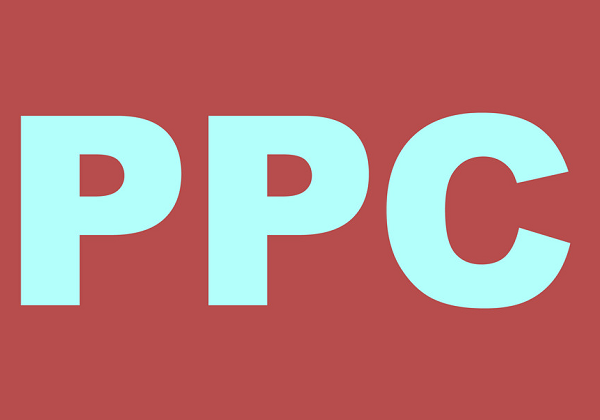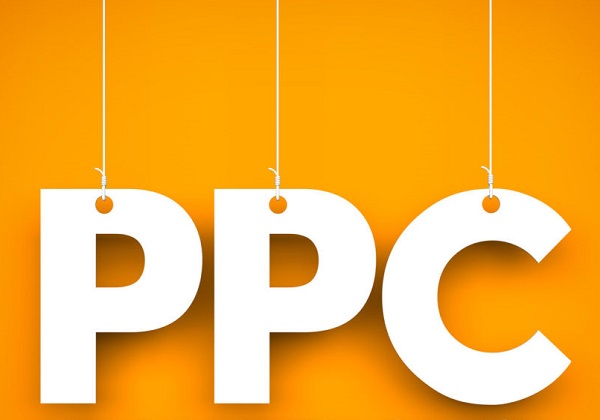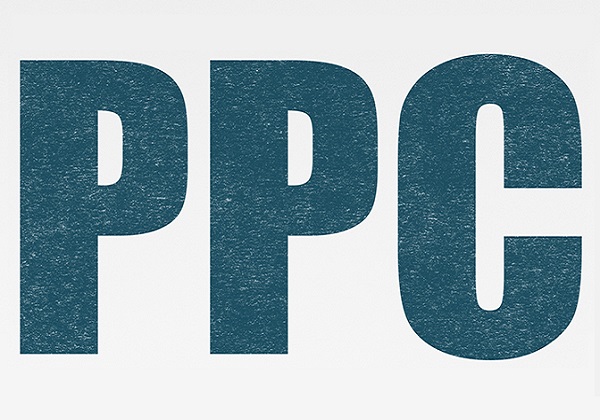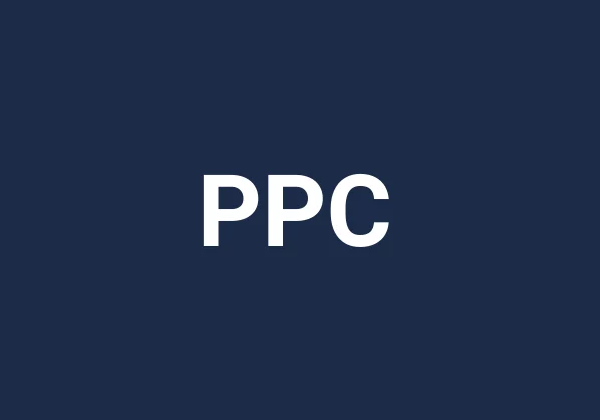



Pay per click (PPC) ads can be observed above the organic results and on the websites across the world wide web. The provision of an Ad label by Google search engine can easily differentiate paid results from organic listings. PPC can be profitable for your business because you only must pay when a user clicks your Ads on search engines. Following is the glossary of commonly used pay per click (PPC) terms:
1. Ad Campaign: You can analyze one or several Ad groups in an Ad campaign. PPC experts should use the related keywords for an Ad campaign and the PPC Ads in the Ad groups.
2. Keyword Matching Options: The keyword match types include the exact, negative, phrase, modified broad and broad.
3. Keyword Planner: A keyword research tool of Google search engine can help you to search for related keywords, the traffic volume of keywords, negative keywords and competitive players.
4. Landing Page: Searchers click on your PPC Ads and find themselves on the landing page of your website.
5. Geofencing: You can draw a virtual fence and show your Ads to users located within that area.
6. Geotargeting: Use a broader geographical region and age range to limit your pay per click advertisements.
7. Seller Rating Extension: An extension that helps you to receive quality leads. The ratings on a five-star scale are displayed beneath the Ad text.
8. Shared Budgets: Using Google AdWords option 'Shared Budgets' can distribute your paid advertising budget across several Ad campaigns.
9. Google Ads: Manage and maximize the performance of your campaigns using a pay per click tool 'Google Ads' (also known as Google AdWords).
10. Facebook Dynamic Ads: These Ads are automatically generated and the users who have previously shown interest in your brand are targeted.
11. Headline: This line is first noticed by the users and a Headline contains a maximum of twenty-five characters.
12. Ad Scheduling: Your Ads can perform better if you customize days and times in 'Ad Scheduling' of Google AdWords.
13. View Through Rate: Defined as the number of views completed divided by the number of initial impressions.
14. View-Through Conversion: Helps to analyze the number of users who only viewed your PPC Ads and converted them through other sources. Online conversions within 30 days are only considered.
15. Website Optimizer: Test different versions of your PPC landing page using Website Optimizer. It helps you to determine the landing page that can generate more conversions.
16. Visitor: Known as for any person who clicks your pay per click (PPC) Ad and visits a website.
17. Ad Status: Describes the eligibility of your Ad appearance on the search engine results page (SERP).
18. Advertising Policies: Your Ads would not run if they violate the policies of advertising platforms. This term describes the guidelines including requirements for your website, keywords or Ads.
19. Assisted Conversion: This value allows you to analyze the performance of the best channels in your multiple digital strategies working together. Interaction of users leading up to conversion can be easily measured using 'Assisted Conversion'.
20. Audience: Users who have visited your website, shown interest in your products or completed specific actions can be referred to as 'Audience'.
21. Frequency Capping: A specific user will observe your Ad for a restricted number of times over a set period.
22. Keyword Research: An important process to search relevant keywords for your business.
23. Free Clicks: These clicks do not require any payment from you and are generated as interaction with your interactive Ads.
24. Application Programming Interface (API): Creating applications using API helps you to manage Google Ads in a simplified manner.
25. Search Engine: Websites (Google and Bing) accessed by users to find information. Search engine algorithms index and crawl websites to deliver relevant information to the queries searched by users.
26. Tracking Code: JavaScript code to track the activity of a website user.
27. Traffic Estimator: Free tool of Google AdWords to research the performance of the keywords based on search volume.
28. Search Engine Marketing (SEM): This is the process of implementing SEO or PPC activity to increase visibility in search engines and drive traffic to websites.
29. Search Engine Optimization (SEO): Optimize (On Page and Off Page) your website and improve organic traffic to your website. SEO helps your website to rank higher on search engines.
30. Search Engine Results Pages (SERPs): Refer 'What is a SERP?' for information.
31. Google Optimize: An optimization platform that assists you to make incremental changes for the improvement in the performance of your website.
32. Click Fraud: The number of clicks falsely inflated on a PPC ad.
33. CTR: Defined as the number of clicks advertisers receive on their ads per number of impressions.
34. Automated Extensions: These information snippets are automatically generated for your paid advertisements.
35. Automatic Bidding: A feature used by Google algorithm to deliver maximum clicks while staying within your budget.
36. Quality Score: Search engine algorithms use the Quality Score metric to analyze the relevancy of keywords. The higher quality score relates to higher rankings of your PPC Ads and less the bids cost.
37. Sitelinks Extensions: You can promote more links with your PPC Ads using Sitelinks Extensions of Google AdWords.
38. Smart Bidding: A machine learning process can improve your conversion value across your bidding campaign.
39. Reach: The reach of an Ad to the total number of users.
40. Remarketing: In this process, returning visitors are shown targeted Ads for them to convert.
41. Auto-Tagging: You can easily analyze the performance of your Google Ads with this feature. In Auto Tagging, Google click identifiers (GCLID) are automatically tagged to your destination URLs.
42. Average CPC: Defined as the average spent when users click on your Ads.
43. Bid: The maximum amount that you want to spend for the clicks of targeted keywords in your Ad campaigns.
44. My Client Center (MCC): Multiple Google Ad accounts can be managed by creating a central account.
45. New Visitor: Defined as the first time visit by a user.
46. Negative Keywords: Expect more qualified clicks by adding negative keywords in your Ad campaigns. Search queries containing 'Negative Keywords' will not allow Google to trigger your Ads.
47. Negative Placement: A feature that assists you to increase the relevancy of your Ads by preventing them to appear on irrelevant websites.
48. Opportunities Tab: The tool of Google AdWords provides suggestions to improve your current pay per click (PPC) campaign.
49. Bidding Types: Four types of bidding are: Cost per thousand impressions (CPM), Cost per engagement (CPE), Cost per click (CPC) and Active view cost per thousand impressions (Active View CPM).
50. Bid Management: Group and optimize keywords to obtain the minimum bid for a keyword. You can manually handle 'Bid Management' activity or outsource the same to a digital marketing agency.
51. CTA: A call to action (CTA) encourage users to take several actions such as product buying, form filling, calling your business and more.
52. Returning Visitor: A user who visited your website more than once.
53. Return on Ad Spend (ROAS): It is calculated by dividing Ad revenue by Ad cost. This metric can be useful to compare the performances of several advertising campaigns.
54. Return on Investment (ROI): Metric is used to analyze the efficiency of PPC campaigns and the worth of your investment.
55. Change History: Allows you to analyze all the changes executed by you in a specific date range.
56. Click: The action of accessing a web page after following a link.
57. Bounce Rate: Ratio of users who bounce after accessing your web page.
58. Broad Match: Your Ad is shown on Google when the query searched by the user contains your keyword in any order or contains any relevant variations.
59. Exact Match: Your Ads will be shown if the query searched by the user matches your keyword word-for-word.
60. Lead: Anyone showing an interest in a service or product but not yet converted is considered as a Lead.
61. LinkedIn Ads: Advertise on relevant pages on LinkedIn using the advertising platform.
62. Location Extensions: These extensions allow your PPC Ads to include your phone number and business address.
63. Location Targeting: Access this setting to show your ads to users in specified geographical locations.
64. Long Tail Keywords: These keywords are less competitive as compared to head terms. Long-tail keywords contain more than one word.
65. Search Network: You can show paid Ads on Google partnered websites, Google Images and Google Maps.
66. Search Query: Users enter a search query to find information on search engines.
67. Search Volume: The estimated number of searches that you can expect for a keyword within a specific time frame.
68. Call Extensions: You can use 'Call Extensions' feature for the addition of your phone number to your pay per click (PPC) ad. This will help searchers to place a call.
69. Callout Extensions: Your business offers such as price match, free shipping and more can be promoted using this feature.
70. Customer Lifetime Value (CLV): Estimate of profit generated by a customer with your business.
71. Cost per Click: The amount that an advertiser pays for an Ad click is known as Cost per Click (CPC).
72. Cost per Conversion: The average cost required for a conversion on your website.
73. Client ID: Each device or browser in the Google system is assigned with a ten-digit string of numbers.
74. Conversion: The main goal of a PPC campaign is to generate more conversions. A conversion is defined as any valuable action such as purchasing a product, form filling or signing up for a service.
75. Hits: Considering 'Hits' helps you to determine the effectiveness of your CTR.
76. Conversion Optimizer: Adjust your bids using 'Conversion Optimizer' and analyze the clicks that will be profitable for you.
77. Conversion Rate: The ratio of conversions divided by clicks is termed as 'Conversion Rate'.
78. Cookies: These are the small files that help Google search engine to track returning visitors and conversions.
79. Pay per Action (PPA): The amount of money you pay to a website that helps you to receive a conversion is termed as 'Pay per Action'.
80. Pay per Click (PPC): Type of paid Ad 'PPC' appears above organic search results and is a very cost-effective advertising method.
81. Pay per Click Management: Pay per click campaigns can be tracked and optimized for maximum returns.
82. Ad Extensions: This pay per click (PPC) feature allows you to add information such as ratings, price, sitelinks to your PPC Ad. Clicking on this information will charge you the same as when they click on the main link of your Ad.
83. Ad Delivery: You can pace up the delivery of your Ads by using this setting in Google AdWords.
84. Ad Group: Using Ad groups can help you to organize your campaign and account. It consists of several Ads that can target related keywords under one bid.
85. Cost per Engagement: The average cost for an Ad interaction by a user.
86. Cost per Impression (CPI): An alternate bidding option to CPC is defined as the average cost per ad shown on the search page.
87. Cost per Lead (CPL): The average cost to generate a lead.
88. Cost per Acquisition (CPA): Defined as the average cost to acquire a customer.
89. Cost per Thousand Impressions (CPM): Price that you want to spend for every thousand impressions.
90. Cost per View (CPV): The average cost per view on a video advertisement.
91. Daily Budget: You can choose the amount of money that you want to spend on your Ad campaign.
92. Price Extensions: Adding 'Price Extensions' to your pay per click (PPC) Ad showcases prices of services or products to users.
93. Product Listing Ads (PLAs): Known as 'Google Shopping Ads' features products with more information such as brand name, images and price.
94. Promotion Extensions: Pay per click experts can add promotional offers to their paid Ads.
95. Prospect: Defined as the lead that qualifies for purchasing and fits your target market.
96. Destination URL: Your landing page URL.
97. Display Network: You can display your Ads on partnered apps and websites if you pay a part of the ad's revenue.
98. Invalid Clicks: Ad clicks that are generated using malicious or automatic software.
99. Ad Copy: Any text in an Ad is termed as 'Ad Copy'. You should write an effective Ad copy for better user engagement. The pay per click Ad copy indicates the URL, the headlines and descriptions.
100. Ad Rotation: Several Ads in your Ad group can set to rotate with the help of 'Ad Rotation' setting in Google AdWords. Let Google select the best performing Ads for rotation, or you can rotate your Ads evenly.
101. Ad Network: Any organization that can act as a broker between websites and advertisers.
102. Ad Position: Defined as the appearance of your Ads in the search engine results pages (SERPs). You can expect the most clicks if your Ad attains the first position on the search page.
103. Ad Rank: The value that is calculated by multiplying quality score and CPC bid. Using Ad Rank can help you to easily determine your Ad position in the search engine results pages (SERPs).
104. Display URL: This URL is shown with your pay per click advertisement. 'Display URL' can be a customized URL or your destination URL.
105. Dynamic Keyword Insertion (DKI): The keywords are more noticeable to searchers because these can be directly inserted by you into your Ad copy.
106. Effective Cost per Click: Also known as 'Estimated Cost per Click' measures the cost-effectiveness of the clicks you gained in your campaign.
107. Enhanced Cost per Click (ECPC): Helps you to increase the ROI for your Ad campaign by providing automatic bid management for your manual bids.
108. Expanded Text Ad: You can include an increased amount of text in your Ads because Expanded Text Ad contains two 90-character description fields and three 30-character headings.
109. Facebook Ads: Facebook gathers demographic data and its platform can be used for group targeting with personalized advertisements.
110. Head Terms: Highly competitive keywords are more costly to bid as compared to keywords with lower volume. Head terms are also known as short-tail keywords.
111. Image Ads: Your products can be well described with the information provided in Image Ads.
112. Impression: The display of your Google Ad to the users is known as 'Impression'. An impression can be shown in search engine results pages (SERPs) or network websites.
113. Impression Share (IS): The impressions received by your Ads divided by the estimated number of impressions you could have received.
114. Instagram Ads: Use this advertising platform to create a photo or video ads for your audience on Instagram.
115. Interest Categories: You can target groupings of users based on their interests.
116. Key Performance Indicator (KPI): Helps you to analyze the goal completion of your advertising campaign.
117. Keywords: Search queries that PPC and SEO experts use to make your web pages rank higher in search engine results pages (SERPs).
118. Manual Bidding: In this setting, you do not require to activate automatic bidding and you can easily customize your bid amounts.
119. Manual Tagging: You do not require an automated software and you can tag your destination URL yourself. This can help you with customization and flexibility.
120. Message Extensions: Potential consumers can easily connect with you if you use the 'Message Extensions' feature.
121. Modified Broad Match: This match type is more specific as compared to a broad match and it is different from an exact match or phrase match.
122. Organic Search Results: These non-paid results appear naturally on search engine results pages (SERPs).
123. Phrase Match: Your Ads will appear on search results once the queries searched by users closely match your keywords.
124. Pinterest Ads: Promoted pins can be targeted as per the devices, locations or demographics.
125. Placement Targeting: You can set up targets for the partner network websites where you want to show your Ads.
126. Placement Tool: Google AdWords tool for display network assists you to locate Ad placement targets.
127. Remarketing Lists for Search Ads (RLSAs): Optimized paid search Ads are used to target returning visitors.
128. Sales Funnel: Defined as the process where the users make a purchase.
129. A/B Testing: This is also known as a split test. You can analyze the performance of two Ad versions (slight difference in Ads).
130. Structured Snippet Extensions: Allows to add a list of features (products or services) to your PPC Ads.
131. TrueView Video Ads: A digital marketer does not have to pay for unwanted views because this type of video Ad gives viewers a choice of viewing or skipping an Ad.
132. Unique Visitor: Individuals who visit your website once within a reporting period.
133. User: A website visitor who purchases your product and retrieves information for benefits.
134. User ID: Unique identity created by users to identify themselves on a network or a computer.

Local PPC can help you connect, engage and grow your business.



Pay per click (PPC) management helps you to grow your business.